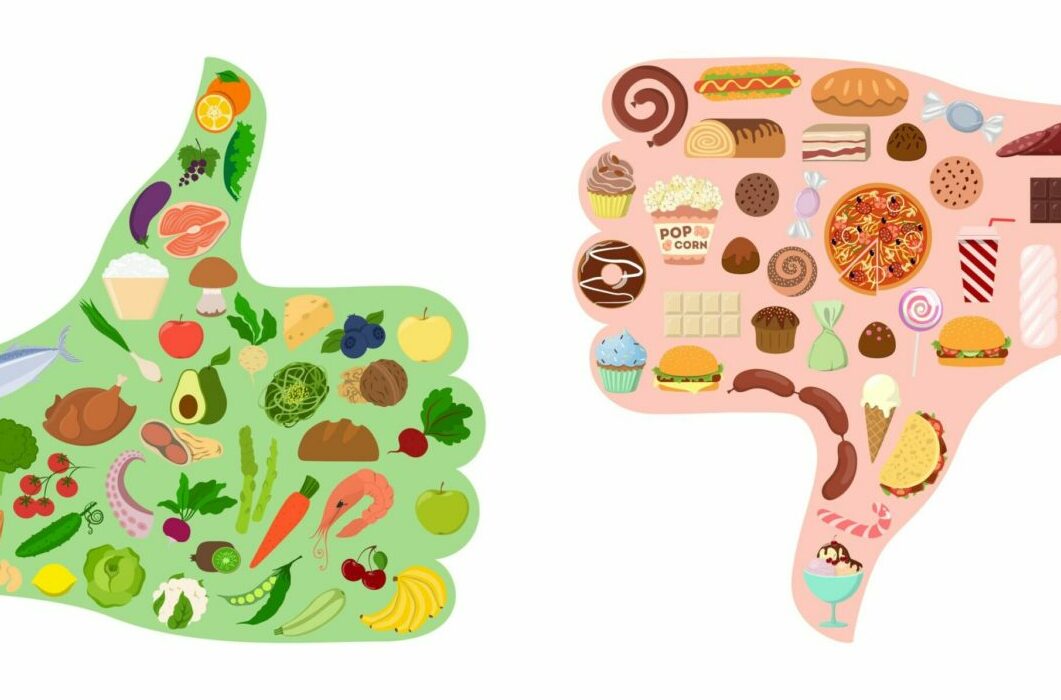
During the first trimester, it is crucial to include at most three to five servings of fruits or vegetables daily. Green peas, spinach, and broccoli are all good choices. Folic acid is a good source of nutrition, so spinach is a great choice. Broccoli is good news for baby because it has lots of iron. While it is not recommended to pregnant women with hypothyroidism it is safe for everyone. Other first trimester foods to avoid include tomatoes, red, green, and yellow bell peppers, sweet potatoes, and avocado.
A healthy diet for the first trimester should contain plenty of whole grains and lentils. These will provide the essential nutrients your growing baby needs to grow and develop. Protein is essential for the first three months of pregnancy, so make sure you get two servings daily. These include dairy products, eggs, poultry and fish. These are the top foods to avoid during this time.
Prenatal nutritionists are the best way for you to make sure that your baby's health is protected. A nutritionist will help you decide the right diet for you and your baby. They can also advise you on what foods you can eat during pregnancy. Healthy eating habits will help ensure a happy baby and a healthy delivery. A woman's first trimester can be exciting.

If you're a new mom, you should try to limit your intake of fatty meat and processed meats. To avoid harming a baby's development, deli and raw meats are best avoided. Avoid shellfish, sashimi, or sushi. Mercury-rich fish should be avoided. Additionally, avoid raw eggs, oysters, shark, and shark.
While it may be tempting to eat fatty and oily fish, don't eat these. They could make your baby's stomach upset. This is a normal reaction to hormones, but you should also consider your pregnancy's stage to know what kinds of food to eat. The most important thing is to focus on eating a variety of healthy foods. It is important to eat a variety vegetables and fruits and avoid fatty meats.
During the first trimester, your baby grows the most, and you should make sure you eat plenty of protein. Consider taking a prenatal vitamin if you are planning on having a baby. Also, make sure to eat lots of iron-rich food. Lean meats and fish are rich in iron, so you should eat them. Also, avoid fried foods or processed foods during your first trimester.
When choosing foods to eat in the first trimester of pregnancy, be sure to read labels. While most meats are safe to consume during the second trimester, there are some items that you should avoid. Listeria bacteria can be found in many unpasteurised dairy products, which can result in an unborn baby getting sick. Avoid soft cheeses with white coatings on the exterior.

Raw fish and shellfish are also to be avoided. They can cause food-borne illnesses. But, raw shellfish may contain harmful bacteria. These foods can be killed by cooking. You should also choose pasteurized milk products to protect your baby. If you are unable to find pasteurized dairy products, you can still purchase them in stores. You should also ensure your baby is safe by choosing non-pasteurized foods.
Your nutrition is also important in the first trimester. A healthy diet is essential, but you also need to avoid processed foods. The best source of protein are fresh fruits and veggies. Folates should be a part of your daily diet. The folates found in these foods are essential for the proper development of the baby's nervous system. The U.S. Public Health Service recommends that pregnant women consume 400 micrograms of folic acid per day.
FAQ
Do I need to count calories?
It is possible to wonder "What diet is best for me?" or "is counting calories necessary?" The answer to this question depends on many factors, including your current health, your personal goals and preferences, as well as your overall lifestyle.
The Best Diet for me - Which One Is Right for You?
The best diet for me depends on my current health status, my personal goals, my preferences, and my overall lifestyle. There are many diets out there, some good and some bad. Some diets work well for some people and others do not. So what should I do? How can I make the best decision?
These are the questions this article will answer. This article begins with a brief overview of the various types of diets that are available today. Next, we'll discuss the pros and cons for each type of diet. The final step is to determine which one is right for you.
Let's look at some of the main types of diets to get started.
Diet Types
There are three main types: low-fat, high-protein, or ketogenic. Let's take a look at them all below.
Low Fat Diets
A low fat diet means a diet that reduces the intake of fats. This is achieved through reducing intakes of saturated fats (butter and cream cheese, for example). You can replace them with unsaturated oils (olive oil and avocados) If you want to lose weight fast and easily, then a low fat diet is often recommended. This type of diet can lead to constipation and heartburn as well as indigestion. Vitamin deficiencies can also occur if the person doesn't get enough vitamins through their diet.
High Protein Diets
High protein diets discourage carbohydrates and encourage the use of proteins. These diets often have higher levels of protein than most other diets. These diets are designed to build muscle mass and help you burn more calories. One problem is that they might not be sufficient to provide regular nutrition. Also, they tend to be very restrictive, so they aren't suitable for everyone.
Ketogenic Diets
Ketogenic diets can also be known as keto diets. They are high fat and moderately carbohydrate and protein-rich. These foods are popular among athletes and bodybuilders as they allow them to train harder, longer and without becoming tired. To avoid side effects such as fatigue, nausea, headaches, or other unpleasant side effects, you must strictly adhere to their instructions.
Increase immunity with herbs or supplements
Natural remedies and herbs can be used to increase immune function. There are many natural remedies that can boost immunity, including echinacea (oregano), ginger, ginkgo biloba and vitamin C.
These herbal remedies should not be used in place of conventional medical treatment. They may cause side effects such as nausea, diarrhea, stomach cramps, headaches, dizziness, and allergic reactions.
How to measure bodyfat?
A Body Fat Analyzer can be used to measure body fat. These devices measure the body fat percentage in people who wish to lose weight.
What are the 7 best tips to lead a healthy, happy life?
-
You should eat right
-
Exercise regularly
-
Rest well
-
Drink lots of water
-
Get enough rest
-
Be happy
-
Smile often
What is the difference in a virus and bacteria?
A virus is a microscopic organism which cannot reproduce outside of its host cell. A bacterium is an organism that splits itself in two. Viruses are small, around 20 nanometers in size. Bacteria are much larger, at 1 micron.
Viruses are often spread through contact of infected bodily fluids like saliva, urine or semen. Bacteria can easily be spread from direct contact to contaminated surfaces and objects.
Viruses can get into our bodies through cuts and scrapes on the skin, bites, and other injuries. They may also get into the body through the nose and mouth, eyes, ears or rectum.
Bacteria can get into our bodies through cuts, scrapes and burns, insect bites, or other skin breaks. They may also be introduced into our bodies through food and water as well as soil, dirt, dust, and animals.
Both bacteria as well as viruses can cause illness. Viruses cannot multiply in their host cells. They can only infect living cells and cause illness.
Bacteria can spread within the host and cause illness. They can even invade other parts of the body. They can even invade other parts of the body, which is why antibiotics are necessary to eradicate them.
Statistics
- The Dietary Guidelines for Americans recommend keeping added sugar intake below 10% of your daily calorie intake, while the World Health Organization recommends slashing added sugars to 5% or less of your daily calories for optimal health (59Trusted (healthline.com)
- In both adults and children, the intake of free sugars should be reduced to less than 10% of total energy intake. (who.int)
- Extra virgin olive oil may benefit heart health, as people who consume it have a lower risk for dying from heart attacks and strokes according to some evidence (57Trusted Source (healthline.com)
- WHO recommends reducing saturated fats to less than 10% of total energy intake; reducing trans-fats to less than 1% of total energy intake; and replacing both saturated fats and trans-fats to unsaturated fats. (who.int)
External Links
How To
What does the word "vitamin" mean?
Vitamins are organic compounds that can be found in foods. Vitamins aid us in absorbing nutrients from the food we eat. Vitamins are not made by the body, so they must be obtained through food.
There are two types of vitamins: water soluble and fat soluble. Water-soluble vitamins dissolve in water easily. You can find vitamin C,B1 or thiamine, B2 or riboflavin and B3 or niacin, B3/niacin, B6/pyridoxine, folic Acid, biotin and pantothenic Acid as examples. Fat soluble vitamins are stored in the liver and fatty tissue. These include vitamin D, E and K, as well as beta carotene.
Vitamins are classified based on their biological activity. There are eight major types of vitamins:
-
A - Vital for normal growth and maintaining good health.
-
C is important for nerve function and energy production.
-
D - Vital for healthy bones and teeth
-
E - Required for good vision & reproduction
-
K – Required for healthy nerves & muscles.
-
P - vital for building strong bones andteeth.
-
Q - Aids digestion and iron absorption
-
R - Red blood cells are made from red blood cells.
The recommended daily allowance (RDA) of vitamins varies depending on age, gender, and physical condition. The U.S. Food and Drug Administration sets RDA values.
For adults over 19 years, the RDA is 400 mg per day for vitamin A. Because it is essential for the development of the fetus, pregnant women should consume 600 micrograms per daily. Children ages 1-8 require 900 micrograms per day. Children under 1 year old require 700 micrograms daily, while infants over one year old need 500 micrograms every day. This decreases between 9 and 12 months.
Children aged 1-18 years need 800 micrograms daily, while children overweight require 1000 micrograms per days. Children who are severely obese or underweight will need 1200 micrograms each day.
Children between 4 and 8 years old with anemia will need 2200 micrograms daily of vitamin C.
2000 micrograms are required daily for good health in adults over 50. Breastfeeding or pregnant women require 3000 micrograms per daily due to higher nutrient demands.
1500 micrograms are required daily by adults over 70 because they lose approximately 10% of their muscle each decade.
Women who are pregnant and lactating need more nutrients than the RDA. Pregnant and breastfeeding women require 4000 micrograms each day during pregnancy and 2500 Micrograms each day after delivery. Breastfeeding mothers require 5000 micrograms daily when breast milk production is occurring.